The maned wolf is what happens when Mother Nature throws out the rulebook.
It’s got the face of a fox, the legs of a deer, and the strut of a runway model who knows they own the forest.
This creature isn’t just tall—it’s absurdly tall.
Like someone glued stilts to a fox and dared it to keep walking.
But don’t be fooled by the graceful saunter or those big, fluffy ears. The maned wolf is a solitary, fruit-munching, scent-marking mystery machine. It doesn’t bark. It doesn’t howl. It lets out a spine-chilling roar-bark that echoes through the South American savannas like a ghost with attitude.
It’s weird. It’s elegant. It’s totally misunderstood.
And it’s about time you met the wild canine that refuses to fit into anyone’s box.
Unmistakable Legs
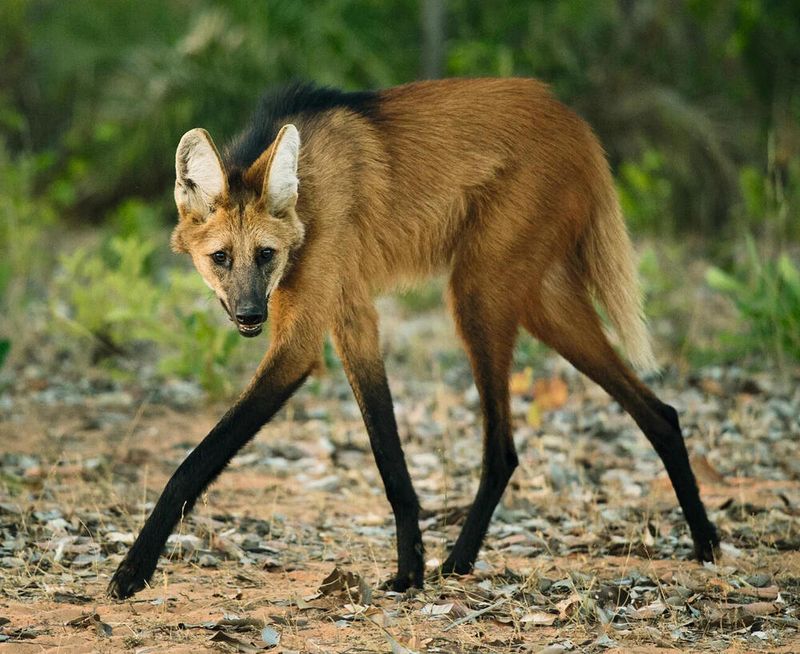
At first glance, the Maned Wolf’s elongated legs might seem exaggerated, but they serve a vital purpose. These legs enable this majestic creature to traverse the tall grasses of its native South American habitat with ease. Picture the delicate balance it maintains as it glides across the landscape, each step carefully measured.
These legs aren’t just for show; they provide an advantageous height to spot prey and predators alike.
Imagine walking on stilts through a dense thicket, and you’ll have a sense of the Maned Wolf’s unique adaptation. Its legs are truly a marvel of evolution.
Dietary Delights
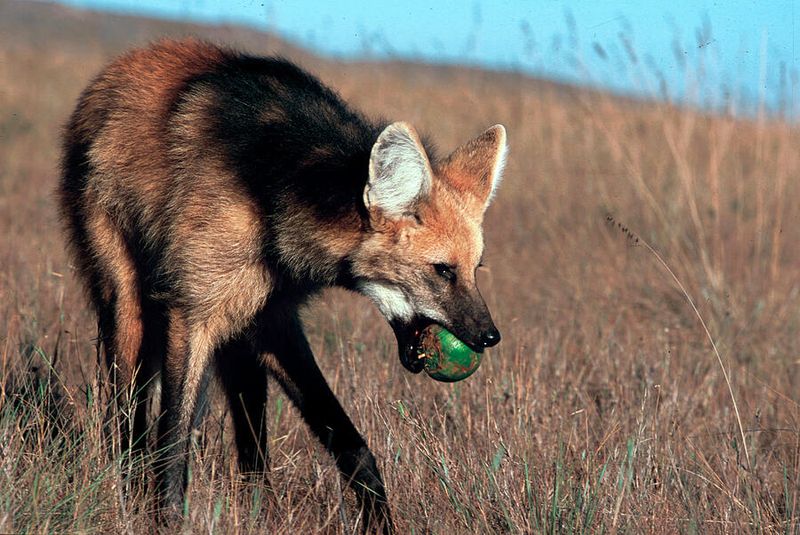
A culinary connoisseur, the Maned Wolf enjoys a varied diet that includes fruits, small mammals, and even insects. Its favorite treat? The lobeira, or “fruit of the wolf.”
This omnivorous palate allows it to adapt to changing food availability with ease. Picture the wolf gently plucking a ripe fruit from a bush, savoring the sweet taste.
Its flexible diet is not just a survival mechanism but a delightful exploration of nature’s buffet. This diversity in diet is essential to its survival, showcasing the Maned Wolf’s adaptability in a changing environment.
Solitary Wanderer
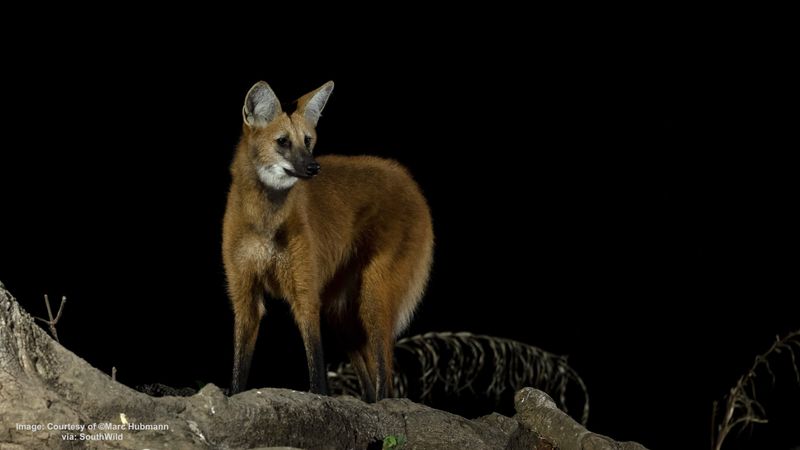
Unlike its wolf cousins, the Maned Wolf prefers a solitary existence. Picture it wandering alone across the expansive plains, the setting sun casting a golden hue over its fur.
Its solitary nature is a testament to its independent spirit, allowing it to move freely in search of food and adventure.
Occasionally, it will pair up during mating season, but for the most part, it embraces solitude. This lifestyle reflects its need for vast territories, where it can roam unencumbered by the constraints of pack life.
The Maned Wolf’s solitary nature is both a survival strategy and a way of life.
Distinctive Bark
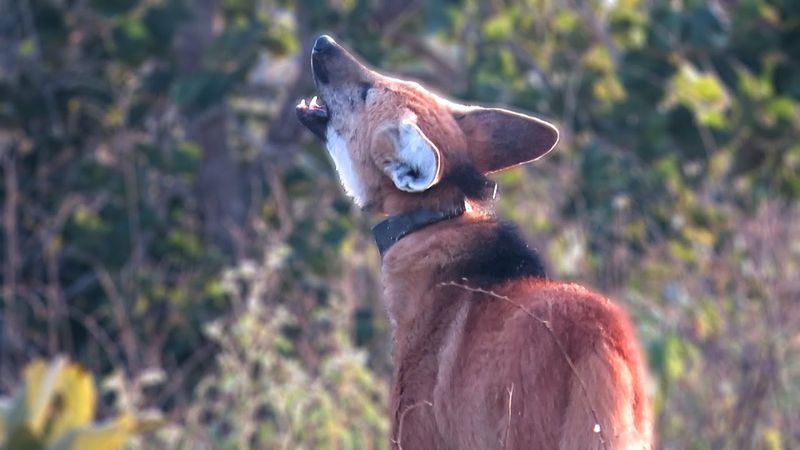
The Maned Wolf is known for its distinctive “roar-bark,” a sound unlike any other in the canine world. Imagine hearing a mix of a bark and a roar echoing across the savanna, a signature call that sets it apart.
This vocalization serves various purposes, from marking territory to communicating with potential mates.
Think of it as the Maned Wolf’s personal language, a way to express its presence without needing to be seen. The roar-bark is as unique as the creature itself, contributing to its enigmatic charm and social communication.
Territory Marking
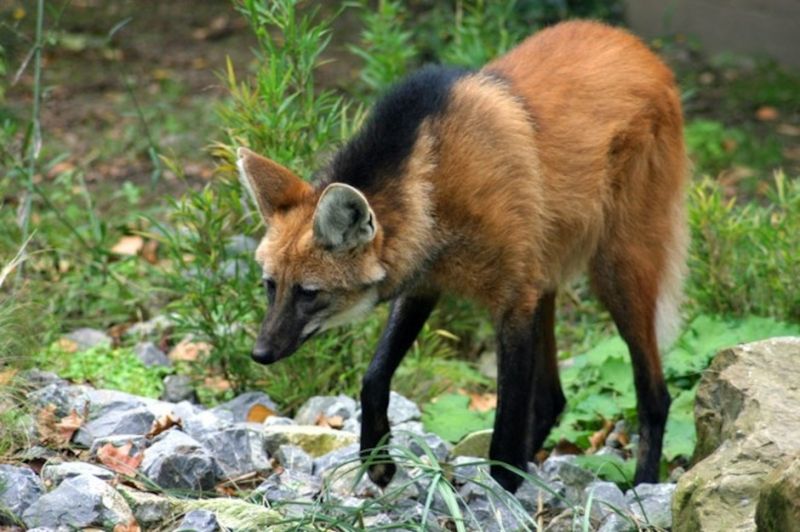
With a keen sense of smell, the Maned Wolf marks its territory using a unique scent, a vital part of its communication toolkit. Picture it carefully selecting a spot to leave its mark, a subtle yet powerful message to others.
Its territorial boundaries are vast, allowing it to claim a significant area in its lush habitat.
This scent-marking behavior is both a warning and an invitation, signaling presence while maintaining balance within the ecosystem. The Maned Wolf’s aromatic signature is an essential aspect of its solitary lifestyle, ensuring it remains unchallenged in its chosen domain.
Elegant Appearance
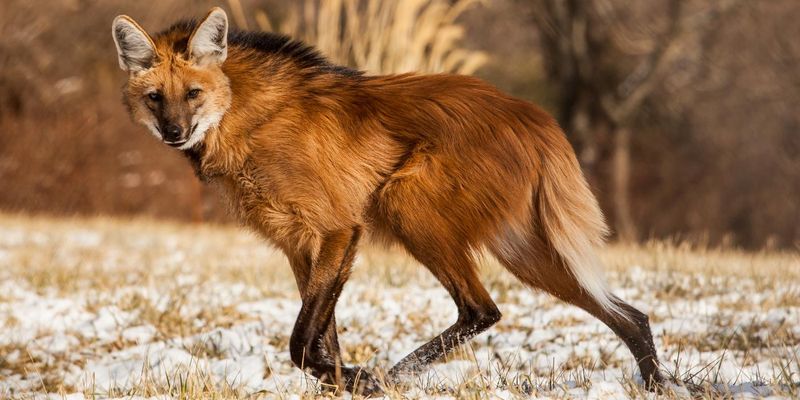
The Maned Wolf’s elegant appearance is a sight to behold. With its rust-colored fur and distinctive black mane, it exudes a regal aura. Imagine the way its coat catches the light, each strand reflecting the sun’s warmth.
This striking appearance is not just for show; it provides camouflage in the wild, blending seamlessly with the tall grasses.
The black mane is especially eye-catching, adding an extra layer of mystique to its appearance. It’s a blend of beauty and practicality, a testament to nature’s artistry in crafting such a unique creature.
Mysterious Origins
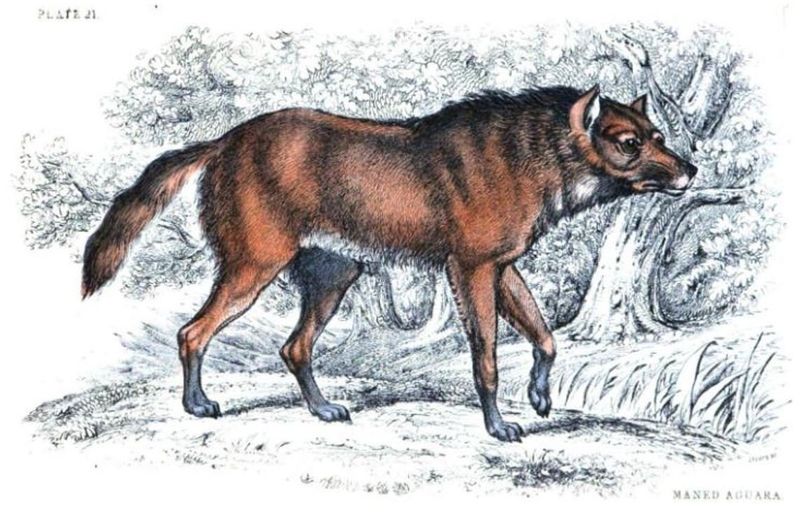
The origins of the Maned Wolf are cloaked in mystery, as it stands alone in its genus. Its evolutionary path diverged from other canines long ago, creating a unique lineage.
Imagine tracing this lineage back through time, following the twists and turns that led to the Maned Wolf’s current form.
Unlike other wolves, it has no close relatives, adding to its enigmatic allure. This solitary lineage is both a scientific puzzle and a fascinating exploration of evolution’s creativity, crafting a creature that defies conventional classification.
Stealthy Hunter

The Maned Wolf is a stealthy hunter, using its keen senses and silent movements to stalk prey. Picture it moving through the tall grass, each step deliberate and calculated.
Its hunting strategy relies on patience and precision, waiting for the perfect moment to strike. This method reflects its adaptability, able to hunt various prey, from rodents to birds.
The Maned Wolf’s hunting prowess is a blend of skill and instinct, showcasing its ability to thrive in its diverse habitat. It’s a master of the hunt, relying on stealth rather than speed to capture its meals.
Social Signals
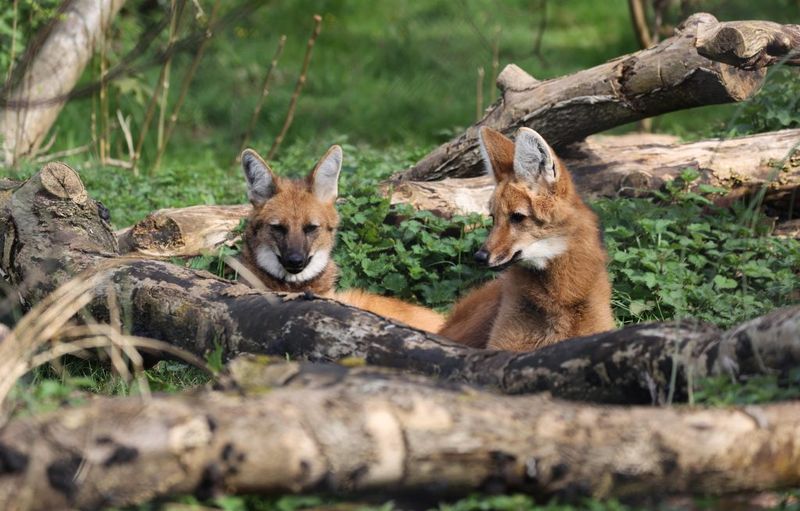
Communication for the Maned Wolf goes beyond vocalizations, extending to a rich tapestry of social signals. Imagine two Maned Wolves in a forest clearing, exchanging subtle cues through scent and body language.
Their interactions are a dance of gestures and scents, each conveying messages of territory, mating, and social status.
These social signals are crucial for maintaining harmony within their solitary lives, allowing them to express themselves without words. It’s a sophisticated form of interaction, highlighting the depth of their social intelligence and adaptability.
Conservation Challenges
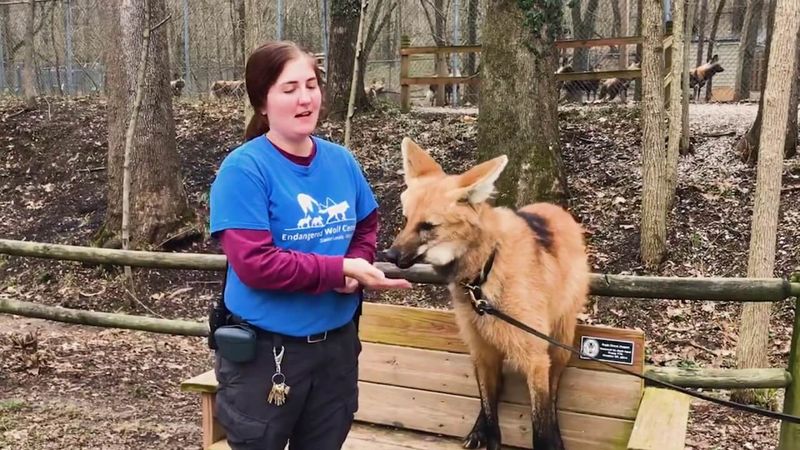
The Maned Wolf faces significant conservation challenges, primarily due to habitat fragmentation and human encroachment. Picture it standing on the edge of a clearing, with roads and structures encroaching its territory.
These threats make survival increasingly difficult, disrupting its natural habitat and resources.
Conservation efforts focus on preserving its environment and protecting this unique species. Awareness and collaboration are keys to ensuring the Maned Wolf’s future, urging us to consider the impact of human activity on its survival. It’s a call to action, emphasizing the need for sustainable coexistence.
Cultural Significance
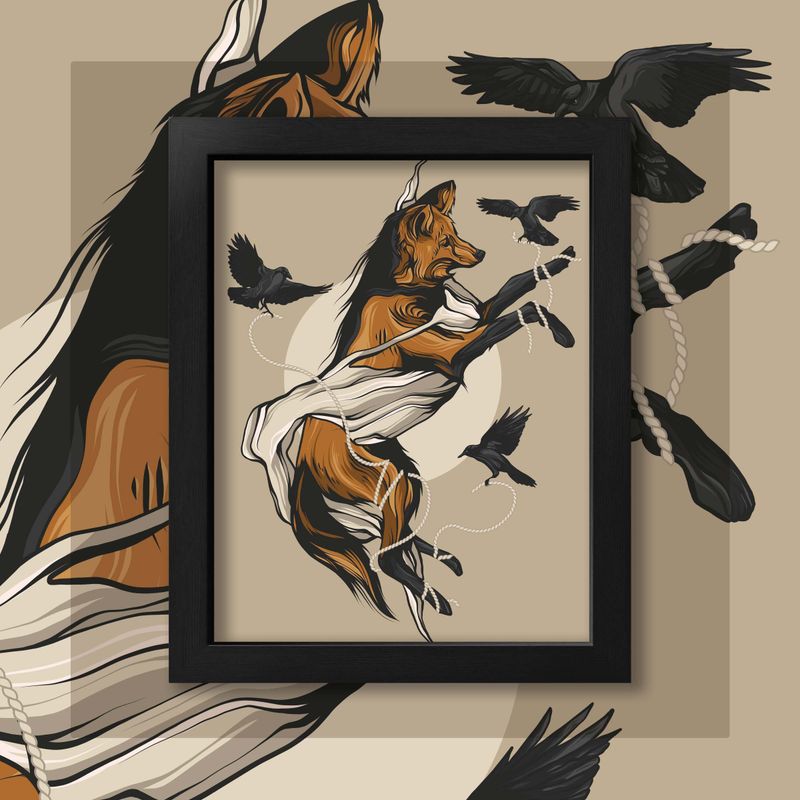
In South American folklore, the Maned Wolf holds a special place, often symbolizing wisdom and mystique. Picture a traditional tapestry depicting this majestic creature, woven with colors and patterns that tell stories of old.
For many indigenous cultures, it represents a connection to nature’s spiritual realm, a guardian of the forest.
These cultural narratives enrich our understanding of the Maned Wolf, offering insights into its symbolic value. It’s more than just an animal; it’s a living legend, celebrated in art and story, bridging the gap between nature and human imagination.
Adaptable Nature
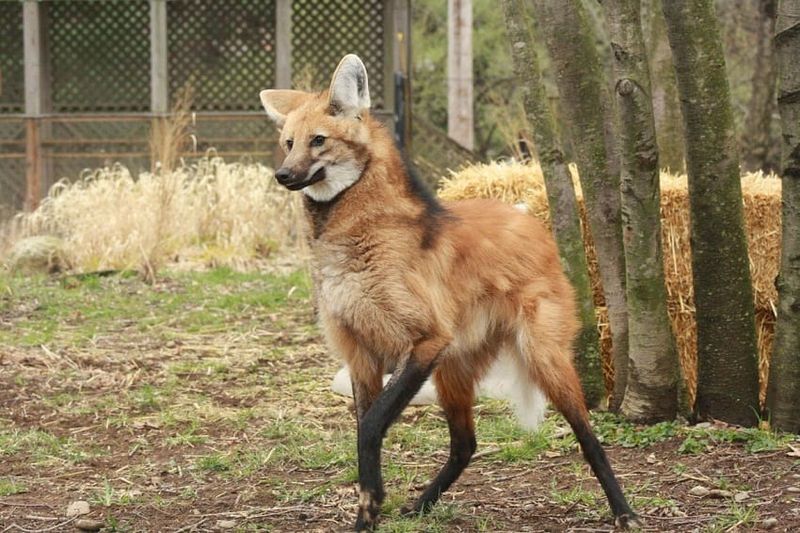
The Maned Wolf thrives in diverse environments, from dense forests to open plains. Picture it navigating through these varied landscapes, its adaptability evident in every step.
This versatility is key to its survival, allowing it to find food and shelter in changing conditions.
Its ability to adapt is not just about survival; it’s about thriving in a world where habitats are constantly shifting. The Maned Wolf’s adaptable nature is a testament to its resilience, showcasing its ability to flourish in both familiar and new territories.
Silent Communicator
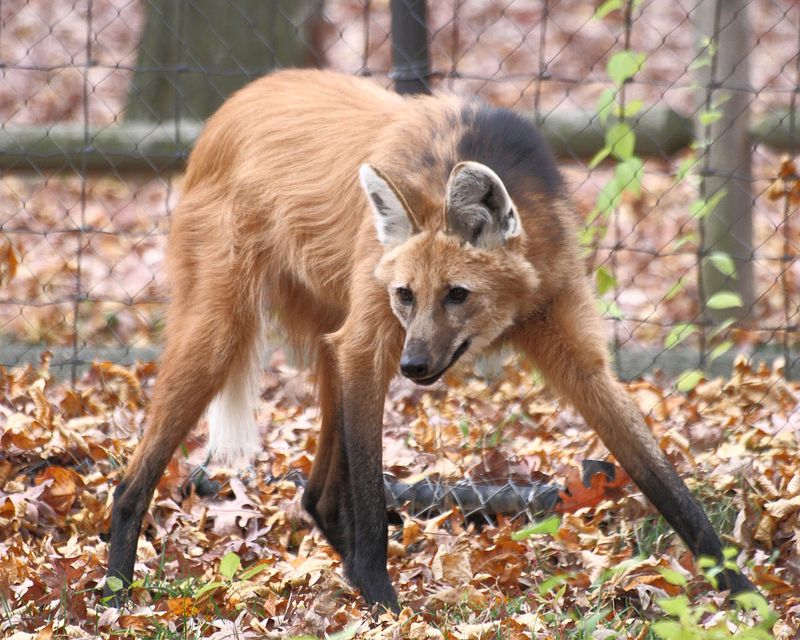
Beyond its vocalizations, the Maned Wolf is a silent communicator, mastering the art of body language. Imagine it standing still in a serene setting, using subtle cues to express itself.
Its ears twitch, its tail flicks, each movement a part of its unspoken language.
This silent communication is essential for survival, allowing it to convey messages without alerting predators. It’s a dance of gestures, a silent dialogue with its environment, highlighting the Maned Wolf’s intuitive understanding of communication. This non-verbal prowess adds another layer to its complex social interactions.
Playful Spirit
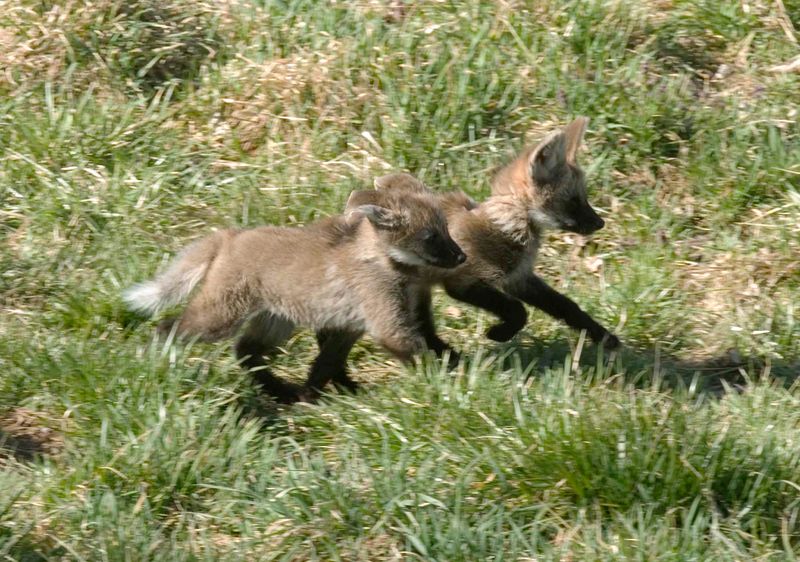
Despite its solitary nature, the Maned Wolf exhibits moments of playfulness, especially in its youth. Picture a group of young pups playfully tumbling in their natural habitat, their curious eyes alight with joy.
These playful interactions are essential for learning and development, helping them hone skills needed for adulthood.
Even adults enjoy the occasional playful romp, a reminder of the joy found in life’s simpler moments. The Maned Wolf’s playful spirit adds a touch of warmth to its mysterious persona, revealing a side that’s both endearing and essential for its growth.

